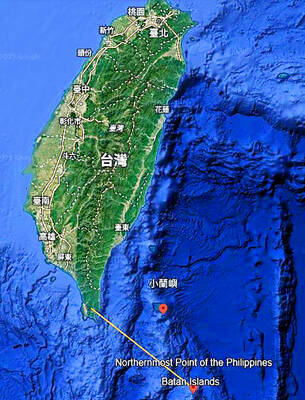Mongolia sealed a long-awaited multibillion-dollar deal with Ivanhoe Mines of Canada and Anglo-Australian miner Rio Tinto yesterday to develop one of the world’s richest copper deposits.
The deal to exploit the Oyu Tolgoi mine was signed by the three parties in a ceremony in the capital Ulan Bator, marking one of the biggest investments in Mongolia since the former Soviet satellite went capitalist two decades ago.
No figure was immediately given for the size of the deal, which was six years in the making, but Mongolia’s minister for mineral resources and energy Dashdorj Zorigt said last month that it was worth US$4 billion.
“This is a significant milestone and we now look forward to working together to develop what I firmly believe is the best undeveloped copper deposit in the world,” Bret Clayton, chief executive of Rio’s Copper and Diamonds group, said in a statement released at the signing.
It said the Mongolian government would own a 34 percent stake in Ivanhoe Mines Mongolia LLC, the project license holder.
The mine in the south Gobi desert will employ as many as 3,000 workers, with thousands more finding jobs along the supply chain, providing a significant boost to the economy of the resource-rich country, one of the poorest in Asia.
Oyu Tolgoi, located about 80km north of the Chinese border, is expected to produce 450,000 tonnes of copper and 330,000 ounces of gold annually over 35 years, Rio Tinto’s statement said.
Mongolia’s GDP — US$5.26 billion last year, World Bank figures show — is expected to increase 34.3 percent over the life of the mine, a 2005 project plan said.
Ivanhoe said it would release an updated plan and financial details after the signing ceremony.
Zorigt, the mineral resource minister, had previously estimated the project could boost Mongolia’s per capita GDP, at about US$1,800 last year, to US$15,000 by 2015.
The deal’s signing comes more than nine years after Ivanhoe started exploration at the Oyu Tolgoi site and six years after it was awarded mining licenses.
Talks had dragged on as Mongolia and Ivanhoe haggled over how big a share the government should take.
Ivanhoe eventually agreed to give the government the 34 percent equity interest and the deal cleared the final hurdle in August when Ulan Bator agreed to scrap a 68 percent windfall tax on copper and gold sales.
Analysts said the deal would provide a “blueprint” for foreign investors wanting to access Mongolia’s rich deposits of copper, gold, uranium, silver and oil.
“This is a pathfinder transaction,” said James McGlew, a senior dealer at Argonaut Securities in Australia. “Hopefully this is the blueprint on how they will develop this part of the economy.”
Rio said it made an initial US$303 million investment for a 9.95 percent stake in Ivanhoe Mines Ltd and has “the obligation to invest 388 million dollars for a further 9.95 percent stake.”
Rio has the option to increase its stake in Ivanhoe Mines to 46.65 percent through fixed-price options and on-market purchases.
It said production was expected to start as early as 2013 with “a five-year ramp-up to full production.”
The Oyu Tolgoi deal is the first of several big contracts the government is hoping to sign.
Next in the pipeline is Tavan Tolgoi, which is said to be the largest untapped coal field in the world. Mining companies and consortiums from Russia, China, South Korea and the US have submitted bids for the project.

SECURITY: As China is ‘reshaping’ Hong Kong’s population, Taiwan must raise the eligibility threshold for applications from Hong Kongers, Chiu Chui-cheng said When Hong Kong and Macau citizens apply for residency in Taiwan, it would be under a new category that includes a “national security observation period,” Mainland Affairs Council (MAC) Minister Chiu Chui-cheng (邱垂正) said yesterday. President William Lai (賴清德) on March 13 announced 17 strategies to counter China’s aggression toward Taiwan, including incorporating national security considerations into the review process for residency applications from Hong Kong and Macau citizens. The situation in Hong Kong is constantly changing, Chiu said to media yesterday on the sidelines of the Taipei Technology Run hosted by the Taipei Neihu Technology Park Development Association. With

CARROT AND STICK: While unrelenting in its military threats, China attracted nearly 40,000 Taiwanese to over 400 business events last year Nearly 40,000 Taiwanese last year joined industry events in China, such as conferences and trade fairs, supported by the Chinese government, a study showed yesterday, as Beijing ramps up a charm offensive toward Taipei alongside military pressure. China has long taken a carrot-and-stick approach to Taiwan, threatening it with the prospect of military action while reaching out to those it believes are amenable to Beijing’s point of view. Taiwanese security officials are wary of what they see as Beijing’s influence campaigns to sway public opinion after Taipei and Beijing gradually resumed travel links halted by the COVID-19 pandemic, but the scale of

A US Marine Corps regiment equipped with Naval Strike Missiles (NSM) is set to participate in the upcoming Balikatan 25 exercise in the Luzon Strait, marking the system’s first-ever deployment in the Philippines. US and Philippine officials have separately confirmed that the Navy Marine Expeditionary Ship Interdiction System (NMESIS) — the mobile launch platform for the Naval Strike Missile — would take part in the joint exercise. The missiles are being deployed to “a strategic first island chain chokepoint” in the waters between Taiwan proper and the Philippines, US-based Naval News reported. “The Luzon Strait and Bashi Channel represent a critical access

Pope Francis is be laid to rest on Saturday after lying in state for three days in St Peter’s Basilica, where the faithful are expected to flock to pay their respects to history’s first Latin American pontiff. The cardinals met yesterday in the Vatican’s synod hall to chart the next steps before a conclave begins to choose Francis’ successor, as condolences poured in from around the world. According to current norms, the conclave must begin between May 5 and 10. The cardinals set the funeral for Saturday at 10am in St Peter’s Square, to be celebrated by the dean of the College